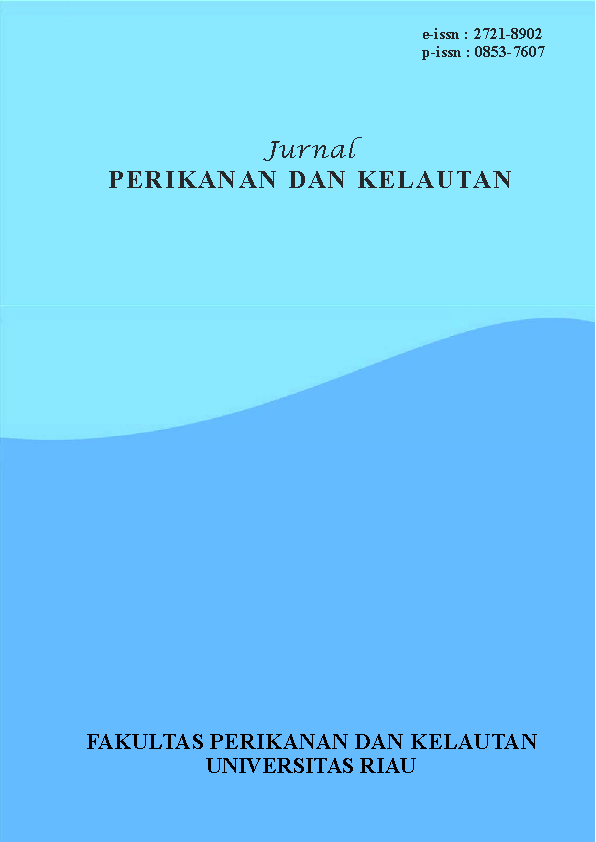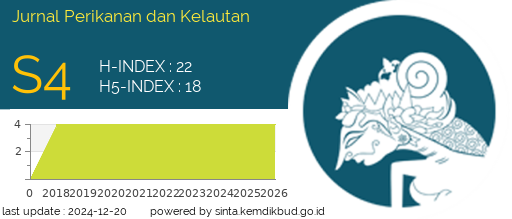Analysis of Product Flow Mechanism, Information, and Finance in the Supply Chain of Fourfinger Threadfin Fish (Eleutheronema tetradactylum) in Tanah Merah Village, Tanah Merah District, Indragiri Hilir Regency
DOI:
https://doi.org/10.31258/jpk.29.3.311-318Keywords:
Tanah Merah Village, Information, Financial, Supply ChainAbstract
Tanah Merah Village is one of the Fourfinger threadfin fish-producing areas. Most of the population works as fishermen as the basis of their economic income. Fourfinger threadfin fish is the main fishery commodity and has high economic value, thus encouraging the sustainable use of Fourfinger threadfin resources. This research aims to analyze the product flow, information, and finance mechanism in the supply chain of fourfinger threadfin (Eleutheronema tetradactylum) from Tanah Merah Village, Tanah Merah District, Indragiri Hilir Regency. The method used was in-depth interviews with a qualitative approach. The research results show that the flow of fourfinger threadfin fish products is spread across four provinces on the island of Sumatra. The payment systems used are cash, bank transfers, and loans. The selling price of delighted fish at the fisherman level is IDR 45.000/kg, and at the end consumer IDR 55.000-70.000/kg. Five Senangin fish supply chain entities, namely fishermen, fishermen, collectors, retailers, and final consumers form 3 chain patterns. The longest chain involves five entities and the shortest three entities. The farmer's share value for fishermen is relatively high at over 60%, with the highest value in chain three at 81.8%, indicating the most efficient chain. The product, financial, and information flow mechanisms have been running well. However, coordination and information integration still need to be improved to optimize the supply chain for fourfinger threadfin fish Tanah Merah Village
Downloads
References
Azhuri, M.F., Suryantini, A., & Waluyati, L.R. (2018). Milkfish Value Chain Analysis in Juwana District, Pati Regency. Agro Economics, 29(2): 262-276.
Elpawati, E. (2014). Analysis of the Performance of the Tilapia Fish Supply Chain at the Jaya Mandiri Cooperative in Teluk Gelam District, Ogan Komering Ilir Regency. Journal of Agricultural Socioeconomics, 1(1): 1-10.
Maulana, I. (2020). Analysis of Sea Fish Catching Business Using Gill Nets (Gillnet) in Panipahan, Pasir Limau Kapas District, Rokan Hilir Regency, Riau Province. Journal of Coastal Socioeconomics, 1(2): 30-38.
Permatachani, A. (2016). Study of Pepper Fish (Leiohnathus equulus) Stock Based on Rampus Net Fishing Equipment in the Sunda Strait Waters. Journal of Fisheries and Marine Technology, 7(2): 107- 116.
Pujawan, I.N., & Er, M. (2017). Supply Chain Management 3rd edition. Guna Widya. Surabaya.
Safitri, I.N. (2022). Strategy for Development of Traditional Fish Landing Places (Pelantar) in Kuala Enok Village, Tanah Merah District, Indragiri Hilir Regency, Riau Province. Faculty of Fisheries and Marine Science. Riau University.
Tjiptono, F. (2017). Marketing strategy. Edition 4. Andi Publisher. Yogyakarta.
Tompodung, E., Worang, F.G., & Roring, F. (2016). Analysis of the Supply Chain for Tilapia Fish in Eris District, Minahasa Regency. EMBA Journal: Journal of Economic, Management, Business and Accounting Research, 4(3).
Vorst, V. (2006). Quantifying the Agri-Food Supply Chain. Amsterdam (NLD): Logistics and Operations Research Group, Wageningen University.
Yulinda, E., Arief, H., & Hendri, R. (2020). Supply Chain Analysis of Shrimp (Panaeus sp.) in Bagansiapiapi, Riau Province. Journal of IOP Conference Series: Earth and Environmental Science, 430(1): 012020








